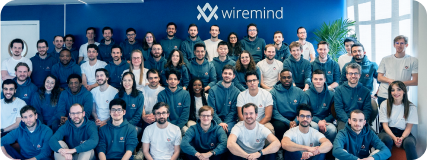Automating Revenue Management: Unlocking the Future of Pricing and Capacity Optimization through Automation

The incorporation of automation has become a significant factor in transforming revenue management strategies. Automation streamlines operational tasks and enables businesses to excel in a highly competitive and ever-changing market. To fully leverage the advantages of automation, it is essential to consider different factors, such as finding the right balance between freedom and automation. Let’s begin by exploring dynamic pricing.
Exploring Various Strategies for Dynamic Pricing
The implementation of dynamic pricing strategies plays a crucial role in revolutionizing revenue management practices. By adapting to market fluctuations, dynamic pricing enables businesses to thrive in a highly competitive and rapidly evolving environment. While demand-based pricing is a widely adopted approach, it’s worth considering two other strategies.
- Demand-Based Pricing: This strategy, commonly observed in transportation services, events, and sports industries, involves adjusting prices based on the level of demand. Prices increase during periods of high demand or peak hours and decrease during times of lower demand or off-peak hours. Additionally, prices may vary based on factors such as the time of day, day of the week, or season (known as time-based pricing).
- Competitor-Based Pricing: In some cases, companies intentionally set lower prices for their offerings, even if it means accepting lower profit margins or operating at a temporary loss. This strategic move aims to create barriers for competitors attempting to enter the market. Conversely, when a competitor sets significantly higher prices for similar products or services, a company employing a competitor-based dynamic pricing strategy might seize the opportunity to increase their own prices and achieve a more attractive profit margin.
- Cost-Based Pricing: The primary objective of this strategy is to ensure that the revenue generated per customer covers or exceeds the cost of providing the product or service. In other words, the marginal cost of each customer is taken into account to avoid incurring expenses for their engagement. By carefully managing pricing in this way, companies can optimize profitability and operational efficiency, aligning their pricing with the constantly changing dynamics of supply and demand.
Considering the Impact of Automating Dynamic Pricing: Factors to Keep in Mind
When optimizing automation for revenue management, it is crucial to consider several factors. For example, it is important to determine the extent of freedom granted to automation, how the boundaries and guidelines for optimization are defined, and how the personality of automation is characterized.
Determining the level of automation to implement
This is one of the initial decisions to consider when introducing dynamic pricing automation. It relies on the complexity of the pricing strategy and the level of confidence in the capabilities of the automated system. There are various options available, ranging from basic rule-based adjustments to more sophisticated machine-learning algorithms. For example, in the domain of passenger ticketing, a lower level of automation may involve implementing simple rule-based pricing adjustments during peak travel seasons. On the other hand, a higher level of automation can allow for real-time price adjustments based on factors such as demand, seat availability, and competitor pricing.
Defining the extent of automated optimization
To enable the automated system to make controlled and responsive decisions and optimizations, it is important to establish clear boundaries and guidelines for its operation. This includes defining the system’s authority to optimize pricing within a specific price range and apply discounts based on certain criteria, such as excessive inventory levels or low demand for specific offerings. It is crucial to specify the areas in which the system is authorized to enhance or optimize, including pricing strategies, discount applications, bundling options, and product placement.
Coordinating pricing automation with brand identity and values
It is crucial to ensure that a company’s personality is reflected and maintained not only in its products but also in its day-to-day operations. Careful consideration should be given to how changes or improvements in processes may impact the brand’s identity. For instance, a brand that offers premium services should exercise caution when considering aggressive discounting, as it may diminish the perceived value of the brand. When implementing transformative initiatives like automation, it is important to maintain consistency in brand identity and utilize automation to enhance the brand’s image.
Granting the right amount of freedom
Finding the appropriate balance of freedom in automation is a complex task. It involves striking a careful balance between granting automation adequate freedom and maintaining human oversight. If the automation is given too little freedom, it may be hindered and constantly require human intervention. Conversely, if it is given excessive freedom, it may exhibit behavior that aligns with mathematical logic but contradicts the brand’s image. Achieving the right level of freedom allows automated systems to adapt and respond to real-time market changes while remaining aligned with the company’s objectives, brand identity, and risk tolerance. Excessive control can result in undesired rigidity, leading to missed opportunities and an inability to react to emerging market trends.
Capacity Optimization Through Demand Forecasting
In a scenario where a decision needs to be made regarding the assignment of an aircraft to a specific destination, there is a complex process known as the “allowed exchange of planes” between routes, which depends on the demand. If there is a high demand for a flight, it may be more feasible to use a larger aircraft to accommodate more passengers. Conversely, on routes with lower demand, using a smaller aircraft can be more cost-effective. This example highlights the practical application of demand forecasting, which involves predicting future demand. It plays a crucial role in guiding complex decisions and finding solutions that optimize both revenues and operational costs.
The Role of Artificial Intelligence and Machine Learning in Shaping the Future of Revenue Management
In a contemporary business landscape, tech-enabled market resilience is the key to thriving businesses. Advanced technologies like Artificial Intelligence and Machine Learning are changing this game for good. As per a report published by McKinsey, AI-based pricing and promotion can unleash a global market value potential between $259.1B to $500B. The automation of pricing rules within revenue management systems using AI can lead to revenue increases of up to 5% in less than nine months.
When machine learning (ML) is used to analyze historical data and make predictions about future behaviors, artificial intelligence (AI) further enhances the strategy by refining the ML-based settings. By combining predictive analytics and optimization with real-time data processing, businesses can leverage data-driven decision-making to dynamically adjust pricing based on various factors such as demand, seasonality, competitor pricing, customer preferences, and internal and external conditions. This approach empowers businesses to adapt and respond swiftly to dynamic situations while ensuring they stay competitive in the volatile realm of supply and demand.
To embrace progress and overcome resistance to change, it is essential for businesses to proactively adapt and utilize transformative tools that enhance human capabilities. Embracing these advancements is no longer a luxury, but a vital necessity for businesses aiming to maintain competitiveness in the constantly changing landscape of supply and demand.
Explore the future of automation
Our flagship Revenue Management Solution, CAYZN, excels in automation. It currently executes 110,000 automated optimizations per day, saving our users’ valuable time.
Explore CAYZN’s full capabilities today. Send an email to [email protected] for a free demo.
Wait a sec! Interested in a quick demo?
Witness how Wiremind's optimization solutions can supercharge your operations.
Book a demo













